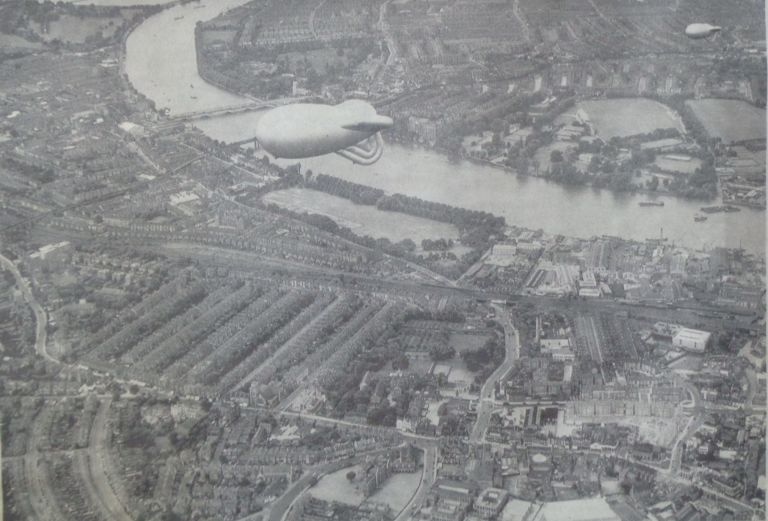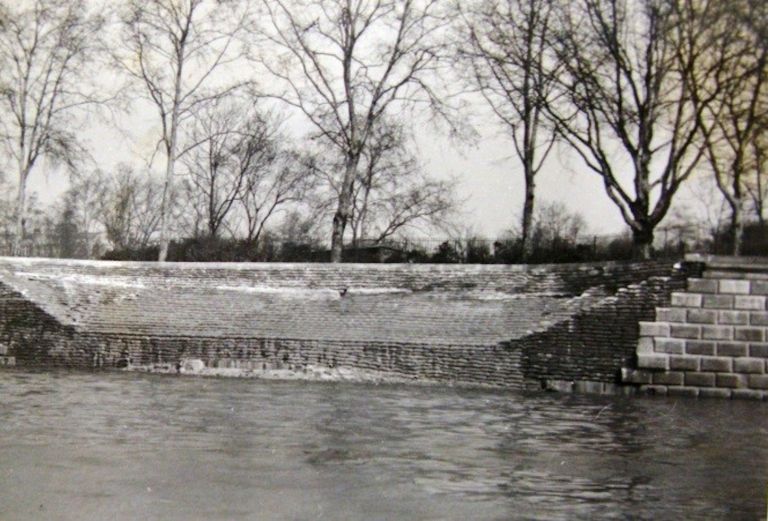
Fulham Palace played an important role during the war. Not only did it become a hospital for the wounded, but also a shelter for those made homeless by the almost nightly bombing of the area from September 1940 – May 1941. At one point, it was even a temporary home for almost 200 people! It’s been said that some people who sheltered at the Palace preferred to sleep in the gardens, rather than risk dying in a direct hit of a bomb onto the building.
Fulham Palace was also a place of billeting for the Women’s Auxiliary Air Force (WAAF), who were the Squadron 24 site for barrage balloons. These balloons were massive and floated in the air, to discourage enemy bombers from flying low and locating areas that bombs could be more accurately dropped on. Queen Elizabeth, wife of King George VI, visited the Fulham Palace WAAFs on 24 March 1943 and stayed long enough to show an interest in what was being done by the corps in aid of the war effort. In 1944 a barrage balloon broke away from its anchor site and flew off and hit a tree with 1,300 feet of cable, this could have been a much worse accident than it was. This incident was included in The Palace Cat book available in the museum shop.
During the Blitz raids, Bishop of London Geoffrey Fisher, counted 12 bomb sites within Fulham Palace grounds, some detonating and others needing to be defused by bomb disposal team members. The Bishop was most upset when one bomb landed on the melons and cucumbers in the greenhouse!

So what has all this history to do with our planned event? Glad you asked!
Whilst we will not be experiencing the Blitz and have our own barrage balloons on the day, we’ll have other exciting events happening to get our visitors into “day-time World War II mode”. We will have World War II re-enactors joining us in their uniforms, handling collections, demonstrations of drill and generally showing visitors usual day time activities during this awful period in the Palace’s history. There will also be a range of Civil Defence groups in uniform, such as Home Guard, Air Raid Precautions Wardens and Fire and Police staff. You will get a feel for how restrictive life could be during the Second World War, as well as feel the community spirit needed to get through such hard times. There were a range of health and safety messages during the war, which included things like always carrying a gas mask, how to undertake first aid, and taping up windows to limit the spread of broken glass. Lighting a cigarette out in the open at night could be enough to contravene the vital black out rules. Everyone was encouraged to collect metal to be melted down for the war effort, to save paper and to collect bones and scraps of food for pig and chicken feeding.
Young visitors will be encouraged to register for identity cards, learn about Morse code, write a first name in code, and then try out a Morse code machine themselves! We will also have an interesting collection of items from the time, including a piece of shrapnel removed from a serving WWII soldier, contemporary stamps and money, and much more. See you what will discover in this fun-filled family event!